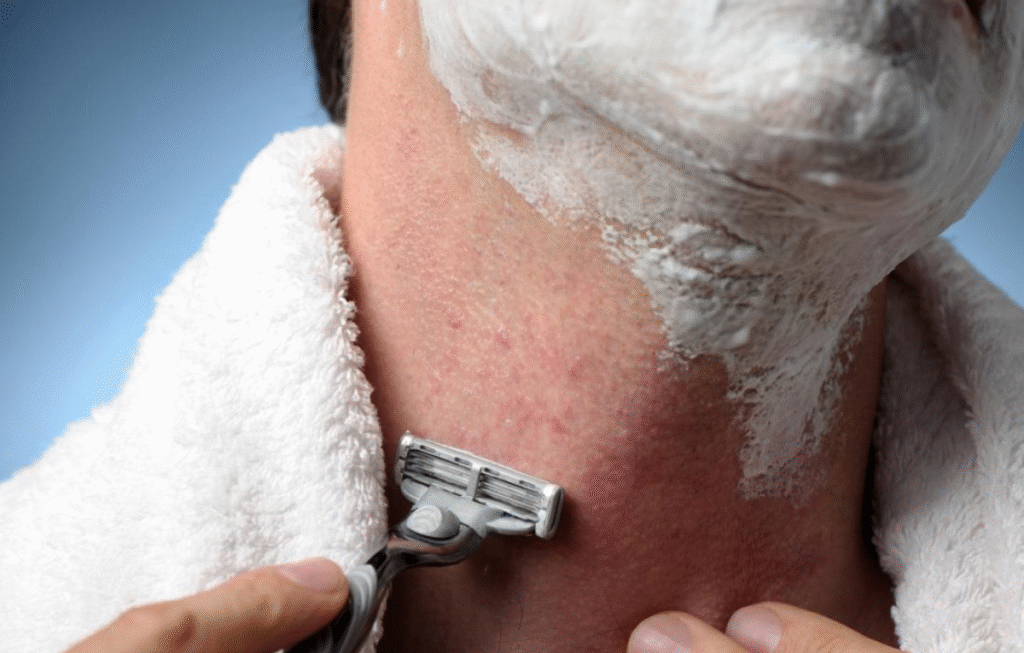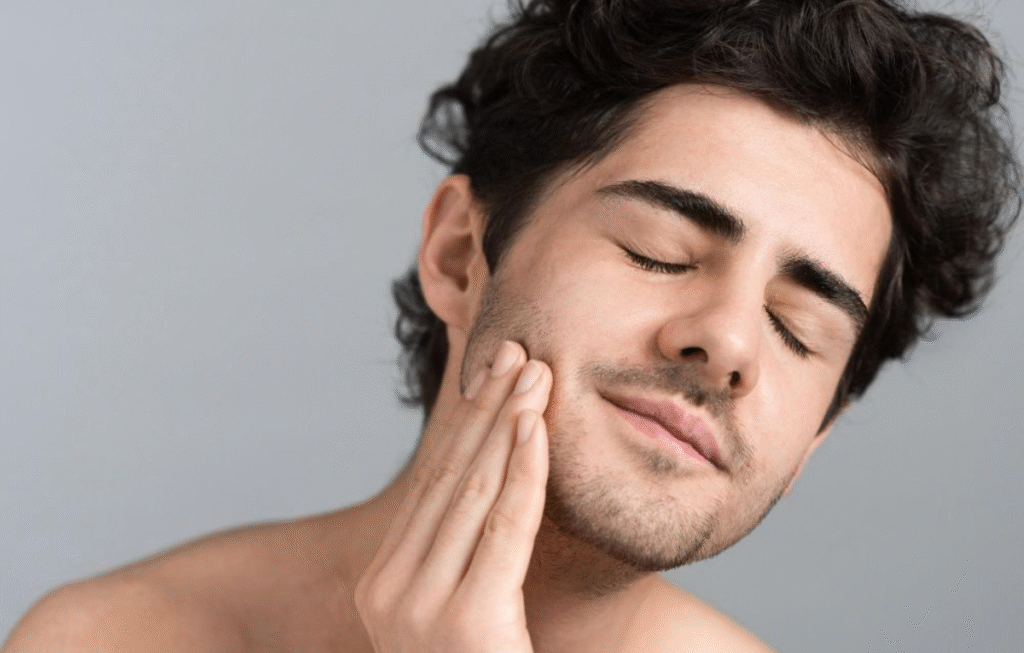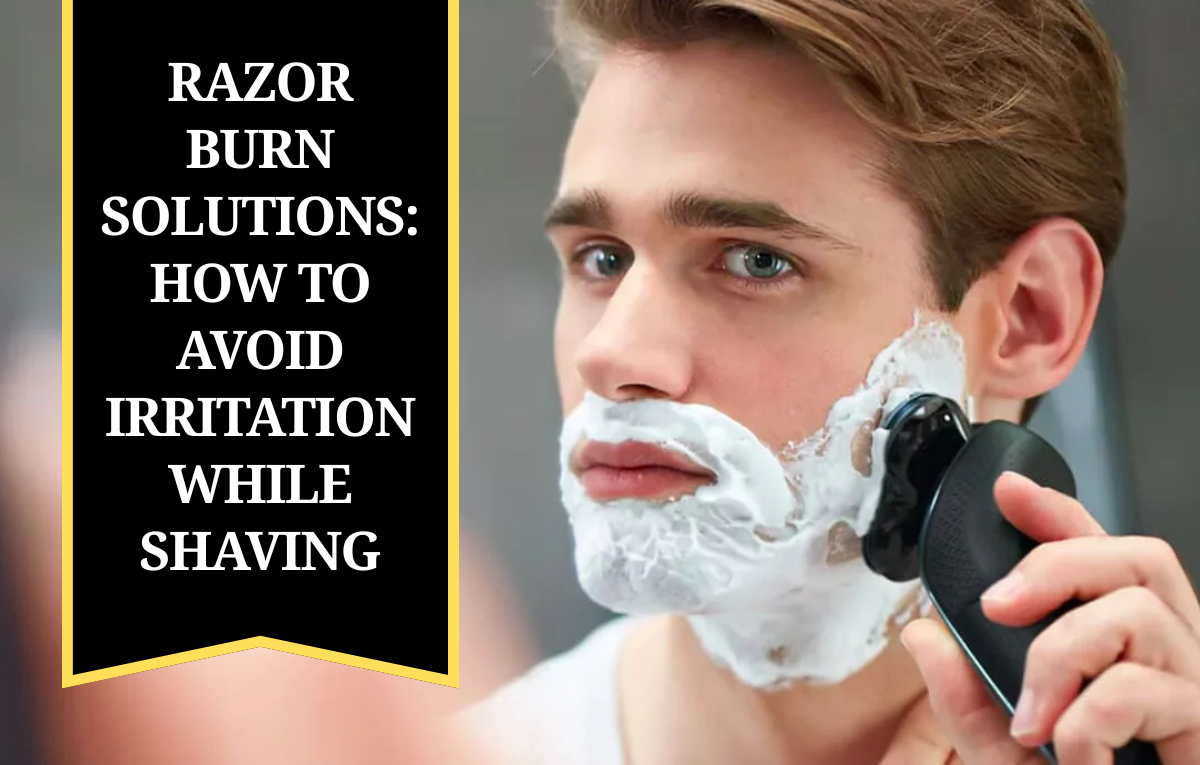Shaving is done on a day-to-day basis. Shaving in some way makes us clean and fresh. In male or female, we shave the face or legs. But some redness on the face or skin, or some irritation or minute pimples appear after shaving some times, or some times not. This condition after shaving is also referred to as razor burn.
The majority of people think that everyone has suffered from this issue at some point or another, but the fact is that if you are cautious about your shaving experience, it is extremely easy to keep such shy problems at bay. This article will raise the question, “what is razor burn and what are likely causes and methods to prevent it whether it is easy, home, or scientific based?”
What Exactly Is Razor Burn?

Razor burn is an inflammatory response or inflamed skin after shaving. It presents as red, itchy, inflamed and at times some tiny pimples on the skin. It tends to occur on the face, neck, armpits, legs, and bikini.
During shaving, the razor cuts the hair together with a thin layer of the top skin. Small cuts in the skin occur due to shaving with an aging razor, dry shaving, or shaving with a highly abrasive razor. The skin becomes inflamed and irritated.
Common Causes of Razor Burn
Knowing what causes razor burn is the first way of avoiding it. Below are the most common causes:
1. Shaving with a Dull or Dirty Razor
A dull or rather very old blade in the final stages of use scrapes the skin rather than shaving off the hairs and thus creates friction and irritation.
A dirty razor is also harboring bacteria that can readily enter through the minute cuts caused during shaving and cause infection.
2. Shaving Without Preparing Properly or No Shaving Cream
Most individuals are in a rush and shave without the front gel or cream. This causes the blade to rub on the skin and increases the risk of inflicting cuts, nicks, and irritation.
3. Shaving Against the Direction of Hair Growth
Shaving against the grain is the most typical method of achieving a smoother shave than with the grain; however, it cuts hair out of the follicle and, in the process, puts extra pressure on the skin. Such a situation may cause swelling and even ingrown hair.
4. Pressing the Beard Too Hard with the Blade
It is aggressive use of the razor that will leave the skin marked. It is a closer shave done more by technique than by brute strength.
5. Wrong Product Applied After Shaving
Most individuals apply alcohol-containing aftershaves which is one of the most common causes of additional drying of the skin and additional irritation. The only recourse is to use moisturizer or aloe vera gel instead.
How to Prevent Razor Burn – Step-by-Step Guide
Finally, let’s have the grand debate, the technique everyone has been waiting for—the techniques of shaving. If you do the following steps, there will be no burn and the shave will be silky smooth.
Step 1: Conditioning Shaving Skin
Shave the area you want to shave or your face with warm water in advance. That is for opening the pores and making the hair soft.
Optimal shaving time is after a bath (shower) since the skin will then be wet and moist. If you are not showering, then use a warm towel and wrap it on your face for 2-3 minutes.
Step 2: Exfoliation with Gentle Treatment
Exfoliation using gentle treatment prior to shaving helps remove dead skin cells and pull the hair out of the roots. This helps the razor glide smoothly and also prevents the roots of the hair from getting stuck in the blade.
You may use a mild scrub or oatmeal face wash. Twice a week is fine to exfoliate. Anything more than that makes the skin brittle and the skin tends to be more irritated.
Step 3: Using the Right Shaving Gel or Cream
At any cost, avoid dry shaving. Always use a shaving cream or gel meant for sensitive skin. The most highly rated shaving gels will not only keep your skin hydrated, but will also have aloe Vera, glycerin, or shea butter. Active ingredients such as these provide a layer of protection on your skin so that the razor has a smooth glide and won’t cut.
For the sake of skin, never use foamy or alcohol-based creams. This type of cream sucks all moisture out of your skin, causing further irritation.
Step 4: Shave with the Hair Growth
Shave always in the direction of the hair, or “with the grain,” since this will shave the hair more easily and apply less stress against the skin.
To have an even closer shave, shave first with the grain and then shave very lightly across the grain. Never shave against it.
Step 5: Shave lightly and wash the blade regularly.
If hair or cream builds up on the blade, it will become rough. So clean the blade with water every 2–3 strokes. You need not press hard on the blade—just run it gently.
Step 6: Cold water rinse after shaving
Apply cold (not ice-cold) water to your face or body immediately after shaving. This closes the pores and soothes the skin. But while washing the skin with cold water, it will less dry than if hot water were used.
Step 7: Apply an aftershave cream or non-alcohol containing cream
Shaving does warm the skin up a little and it must be cooled down. Soak with a post-shave balm or Aloe Vera gel to soothe and hydrate the skin.
Some good options are:
- Nivea Men Sensitive Post Shave Balm
- The Body Shop Aloe Vera Gel
- Himalaya Aloe Vera Gel
Step 8: Moisturize Daily
Develop the habit of using moisturizer every day, not only after shaving. This keeps skin well-hydrated and its defense wall strong.
The right moisturizer would have ceramides, hyaluronic acid, and niacinamide. They nourish, restore, and calm the skin.
Best Remedies for Razor Burn

When you feel irritation, redness, and itching as a shaving reaction, don’t panic. There are certain easy home and medical remedies that can be helpful.
1. Apply Aloe Vera Gel
Aloe vera contains anti-inflammatory and anti-inflammatory properties. Take the gel from a new leaf of a fresh aloe vera plant or pure aloe vera gel that is available in the market.
2. Cold Compress
Soak a cotton cloth in cold water or ice and place it over the affected area for a few minutes. This cools the skin instantly and decreases swelling.
3. Coconut Oil
Both a lubricant and an antibacterial, coconut oil is used. A small amount of coconut oil applied after shaving leaves skin soft and guarded.
4. Witch Hazel
All natural astringent which diminishes swelling and tightens the skin. Apply lightly on a cotton ball.
5. Hydrocortisone Cream
If it is very irritating, use 1% hydrocortisone cream. But do not use the product for a long time. If the issue continues, consult a physician.
Common Shaving Mistakes to Avoid
- Do not dry shave.
- Avoid using old blades.
- Keep the blade sharp.
- Do not shave the skin so hard with the razor.
- Do not use aftershaves with alcohol or perfumes.
Choosing the Right Razor for Sensitive Skin
How to select the perfect razor for individuals with sensitive skin The correct razor can make a huge difference to your skin’s health.
- For men: 3 to 5 blade razor with a lubrication strip.
- For women: Body shaving razor with a flexible handle and soft grip.
- Electric razor: If your skin is extremely sensitive, then you may use an electric razor. It doesn’t shave so close to the skin and therefore is less irritating.
Change the blade every 5–7 uses to avoid bacterial growth.
Home Remedies to Prevent Future Razor Burn
- Oatmeal paste: Grind oatmeal, mix honey, and apply on the skin for 10 minutes.
- Green tea bags: Chill a used tea bag and apply to the skin to cool inflammation.
- Cucumber slices: Placing cold cucumber slices on the skin gives immediate cooling and relief.
Lifestyle Tips to Keep Your Skin Healthy

Drink lots of water to hydrate skin. Eat a healthy diet—food that has vitamins A, C, and E can revitalize and tighten up skin. Reduce stress, as stress changes hormones and irritates skin.
Sleep well and let skin heal and rebuild. Replace pillowcases and towels frequently to avoid the transmission of bacteria.
When to See a Dermatologist
If the rash fills up with pus, the pain increases, or redness intensifies even after shaving, talk with a dermatologist as it might be folliculitis or infection.
Conclusion
Razor burn isn’t a big deal, but it can linger and do damage to skin if not addressed. Shaving with a clean edge and method can make all the difference.
Don’t think about shaving as a task, think about it as an act of self-care, an act of self-care that makes you feel clean and confident.
If you have the right products and technique, and if you are patient, you should be able to get a comfortable, smooth, and clean shave every time.
FAQs:-
What is razor burn?
Razor burn is skin irritation caused by shaving, leading to redness, itching, and small bumps on the skin.
What type of shaving cream is best for preventing razor burn?
Choose a fragrance-free, moisturizing shaving cream or gel that provides a smooth glide for your razor.
How can I treat existing razor burn quickly?
Apply a cool compress, aloe vera gel, or hydrocortisone cream to soothe inflammation and speed up healing.
